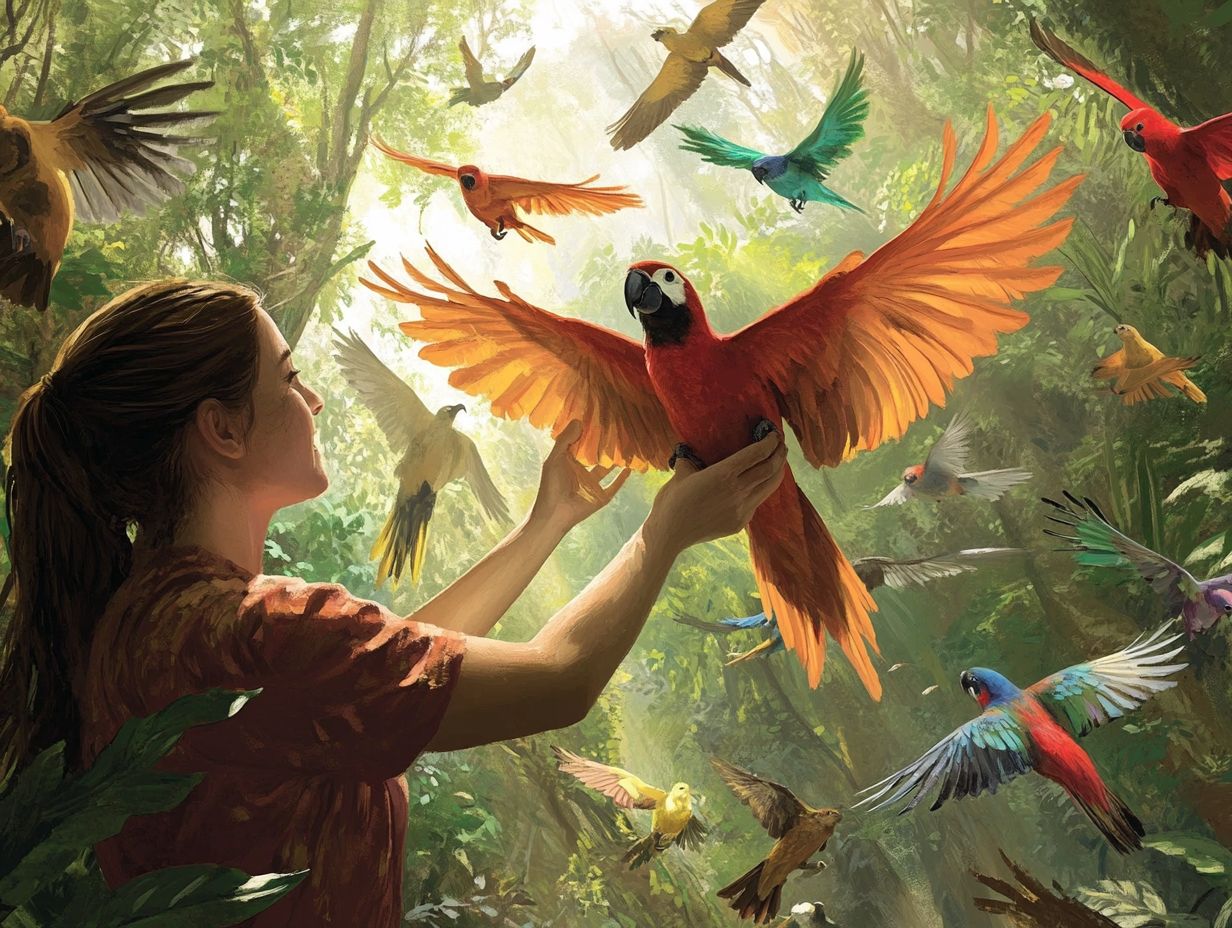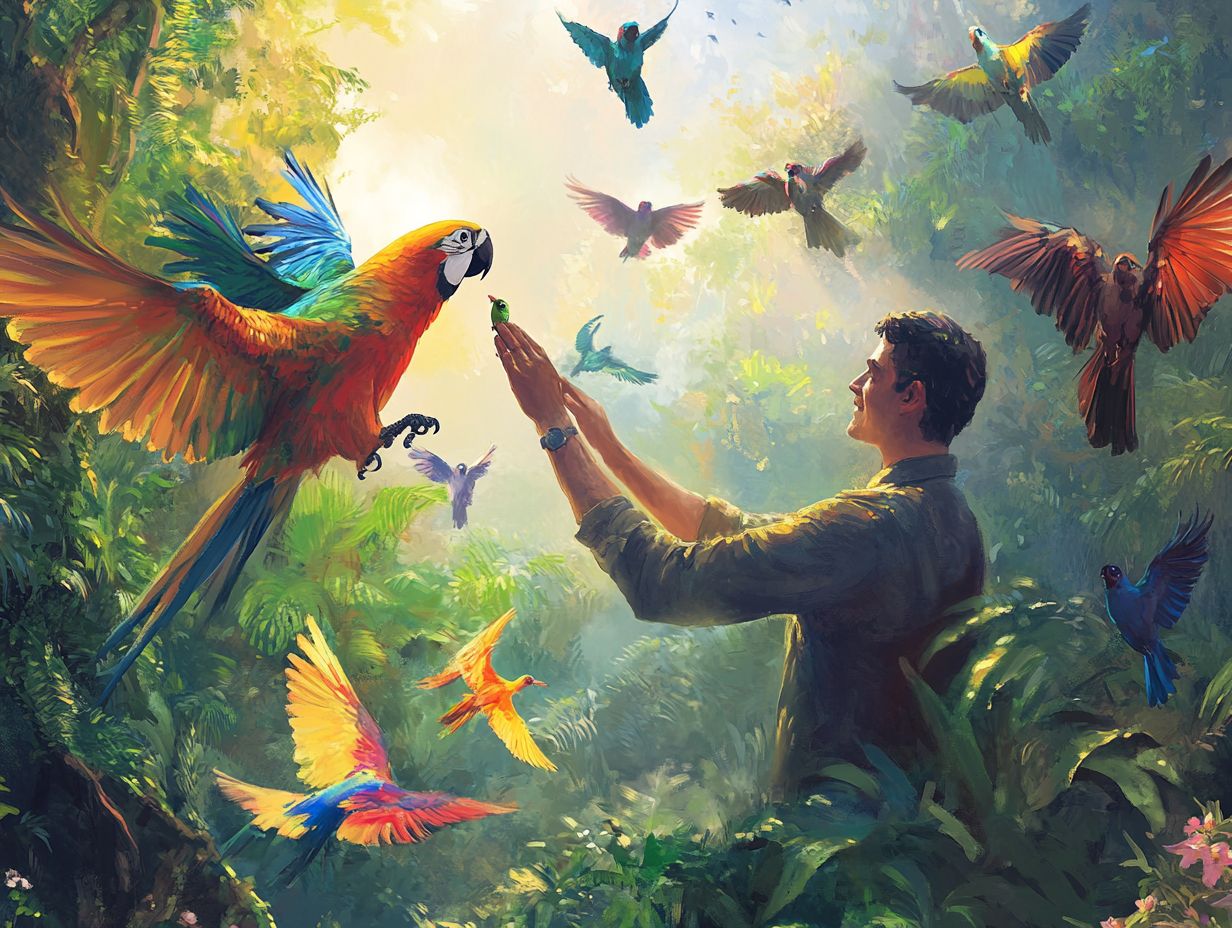Bird conservation is a vital field dedicated to the protection of birds and their habitats. This article highlights significant success stories in bird conservation, showcasing case studies of species that have been successfully removed from the endangered species list.
We explore the threats these birds face, including human impact and changing environmental conditions, and examine the methods employed in conservation efforts, such as habitat protection and species reintroduction.
Additionally, we discuss the future of bird conservation, addressing the challenges that lie ahead and the opportunities for positive change.
What is Bird Conservation?

Bird conservation is a vital aspect of wildlife conservation that focuses on protecting specific bird species and their habitats, thereby promoting balanced ecosystems and enhancing biodiversity.
By employing various techniques and strategies, avian conservation aims to prevent the extinction of endangered birds and ensure the persistence of diverse bird populations within their local ecosystems and migratory routes.
Examples of Successful Bird Conservation Efforts
Successful bird conservation efforts worldwide highlight the positive effects of these initiatives on species recovery and habitat restoration. These examples illustrate how effective breeding programs, along with the establishment of protected areas and wildlife sanctuaries, have contributed to the recovery of threatened bird species and the restoration of ecosystem resilience.
Case Studies of Saved Bird Species

Studies of saved bird species provide valuable insights into the success and failure of conservation programs and strategies aimed at species recovery. These examples highlight the significance of avian rehabilitation and community engagement initiatives in effectively conserving endangered birds and their populations.
For instance, the California condor faced near extinction in the 1980s due to poaching and habitat destruction. In response, conservationists established a captive breeding program while also working closely with local communities to emphasize the importance of this magnificent bird. Habitat restoration projects were initiated that contributed to the recovery of this majestic species.
Similarly, the successful reintroduction of the Mauritius ochre-breasted parakeet required years of field data collection and collaboration with local stakeholders. This species’ recovery not only increased its population but also positively impacted the overall biodiversity of the island, demonstrating the significant benefits that conservation efforts can bring to local ecosystems.
Factors Threatening Bird Species
Bird species face significant threats from habitat loss, human activities, and climate change. These threats not only affect individual bird populations but can also impact entire ecosystems, increasing the vulnerability of at-risk species and contributing to drastic declines in overall bird populations.
Human Impact and Environmental Factors

Environmental factors that affect birds include human impacts on the environment, which negatively influence the quality of avian ecosystems and contribute to the loss of critical wildlife corridors. It is essential to recognize these factors, as understanding the challenges birds face due to environmental changes is crucial for finding solutions.
Urban development leads to the spread of cities and their infrastructure, resulting in the fragmentation of important habitats. This fragmentation limits access to essential feeding grounds and nesting sites.
Traditional agriculture, particularly when characterized by monocultures and pesticide use, diminishes natural ecosystems and creates an unhealthy environment for birds’ survival.
Additionally, pollution from sources such as plastic waste and chemical runoff contaminates natural habitats, leading to health complications for birds and a reduction in biodiversity within their ecosystems.
Methods Used in Bird Conservation
Bird conservation methods encompass a range of strategies aimed at addressing the challenges that birds face and ensuring their survival. These strategies include:
- Habitat protection
- Species monitoring
- Environmental stewardship
- Ecological restoration efforts
Habitat Protection and Restoration

Habitat protection and restoration are essential components of bird conservation, ensuring that birds have adequate natural nesting sites and food sources. Conservation policies and the establishment of protected areas foster sustainable environments based on ecological balance, which are vital for maintaining healthy bird populations.
Achieving these goals requires a collaborative approach that involves local communities. Engaging citizens not only fosters a sense of ownership but also allows local knowledge to enhance effective habitat management.
Strategies such as reforestation, wetland restoration, and the creation of wildlife corridors are crucial for mitigating the negative impacts of urban development and climate change on bird habitats. Additionally, protecting key breeding grounds, migratory routes, and wintering habitats is a significant aspect of bird conservation and is essential for maintaining healthy ecosystems.
Species Reintroduction and Captive Breeding
Species reintroduction and captive breeding are vital techniques in avian conservation, aimed at strengthening endangered bird populations and ensuring their long-term survival. These practices involve the careful application of conservation genetics and breeding success strategies to effectively restore species to their natural habitats.
However, they face numerous challenges, including habitat loss, climate change, and threats from invasive species. Successful reintroduction requires meticulous planning, which includes selecting suitable release sites and ongoing monitoring to evaluate the adaptability of the species to their new environment.
Successful cases, such as the reintroduction of the California condor and the Mauritius kestrel, demonstrate how well-managed breeding programs and thorough genetic screening can help sustain biodiversity. The science behind these practices highlights the critical importance of preserving genetic diversity to enhance resilience, further underscoring the need for strategic conservation efforts that extend beyond simply releasing birds into the wild.
Future of Bird Conservation
The future of bird conservation will hinge on addressing current challenges while seizing opportunities for collaboration and public engagement.
By fostering community involvement and improving public policy, the bird conservation community can enhance the infrastructure necessary to protect bird species and their habitats from both ongoing and emerging global threats.
Challenges and Opportunities
Bird conservation challenges, such as securing funding and enacting legislative action, also present opportunities for developing better solutions and partnerships. By leveraging ecological networks and community support, we can enhance conservation efforts and ensure the long-term success of avian species.
To combat the increasingly damaging effects of habitat loss, climate change, and illegal poaching, innovative strategies need to be developed that make use of existing resources and support systems. For instance, promoting community involvement in conservation enables local populations and fosters practices that benefit both birds and humans.
Funding from governmental and non-governmental organizations is essential for implementing technologies like tracking systems and habitat restoration projects. Additionally, strong legislative action that prioritizes biodiversity creates a favorable environment for robust bird protection measures.
Collectively, these initiatives encourage collaborative efforts that represent a holistic approach to bird conservation.
